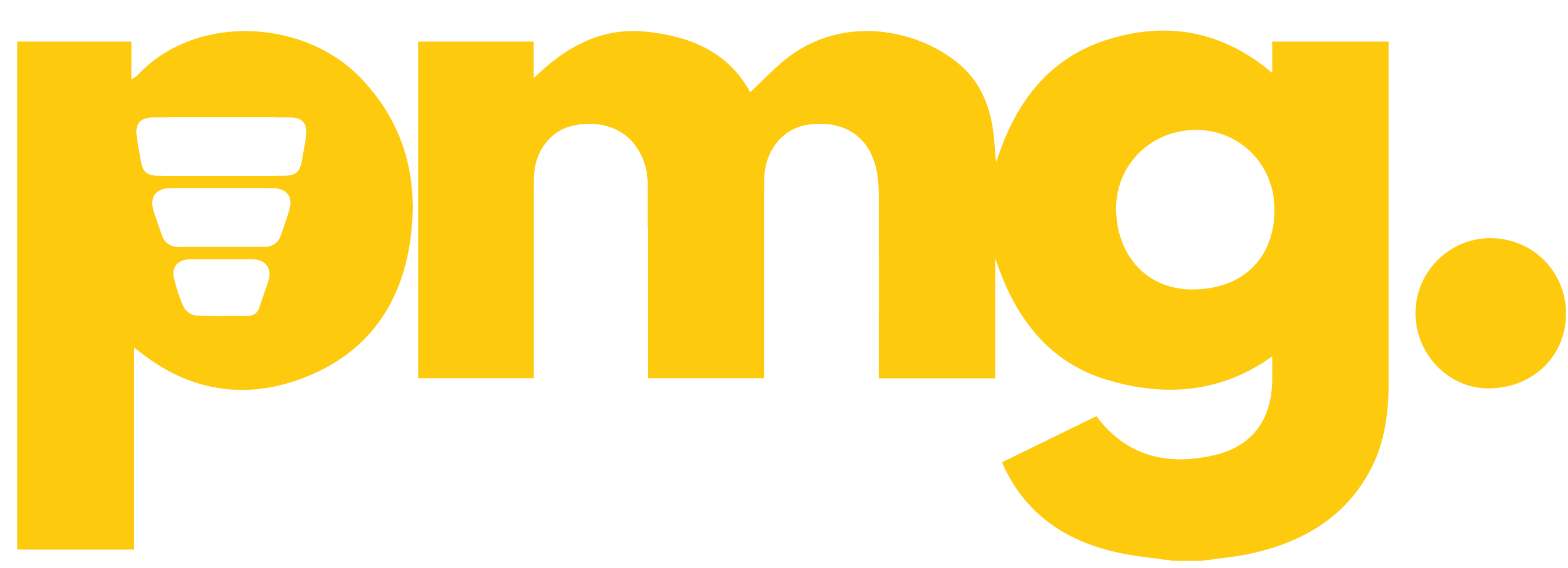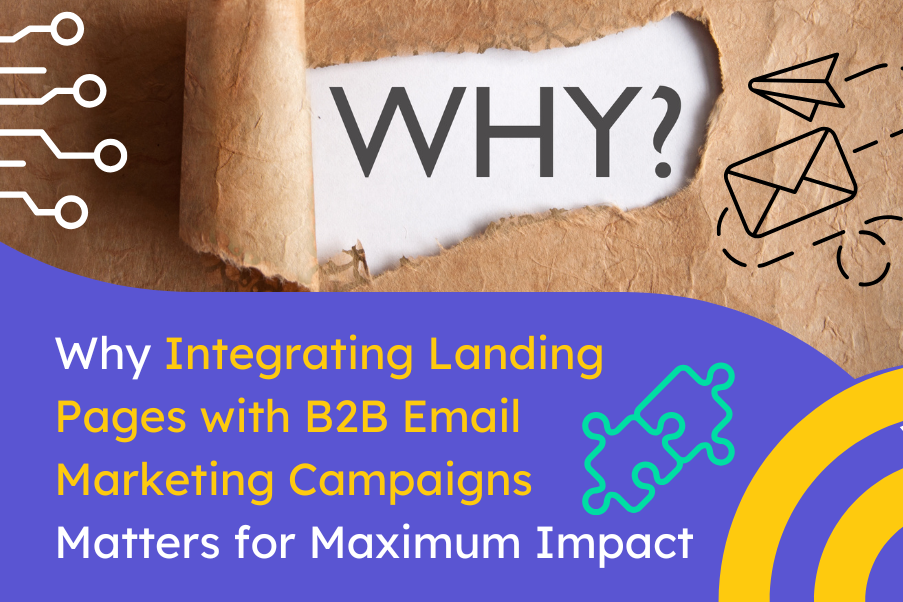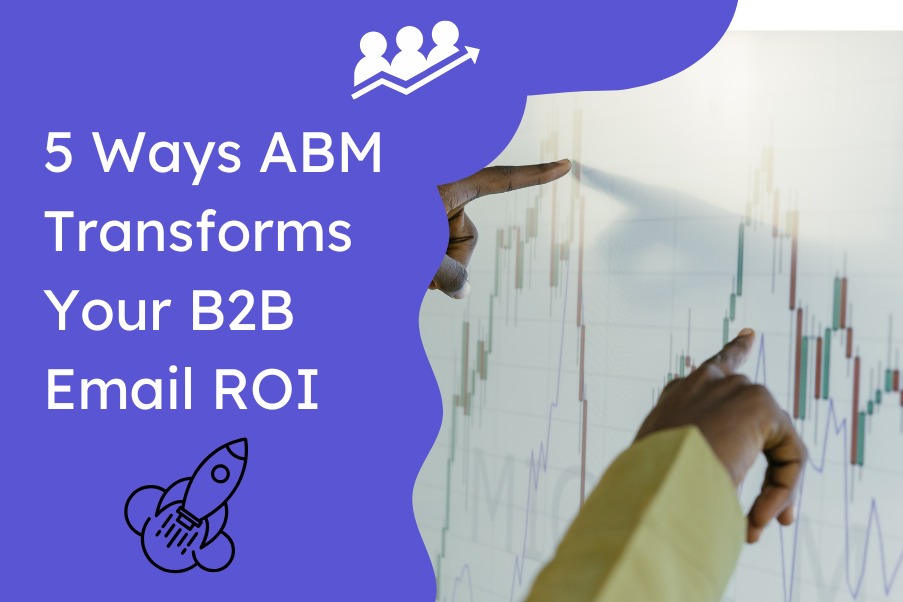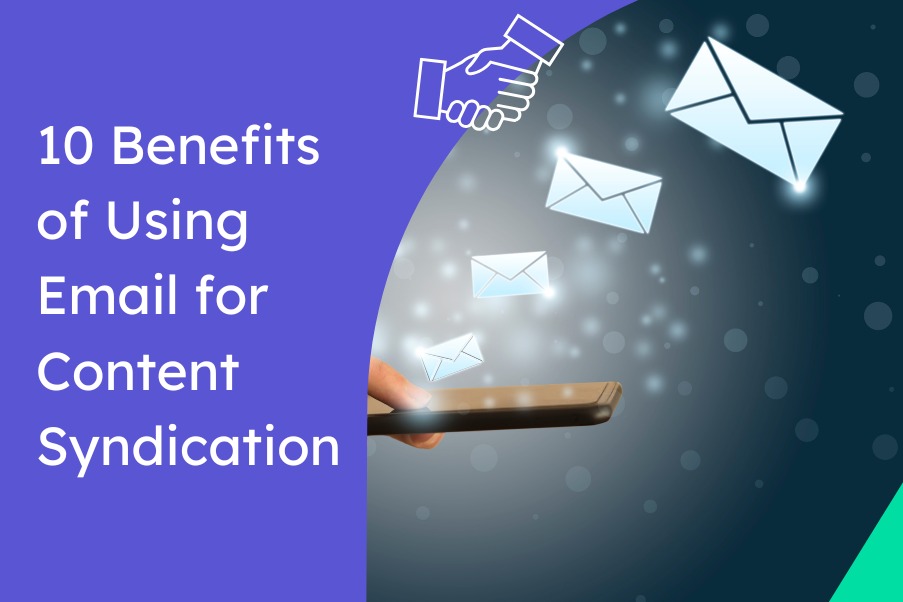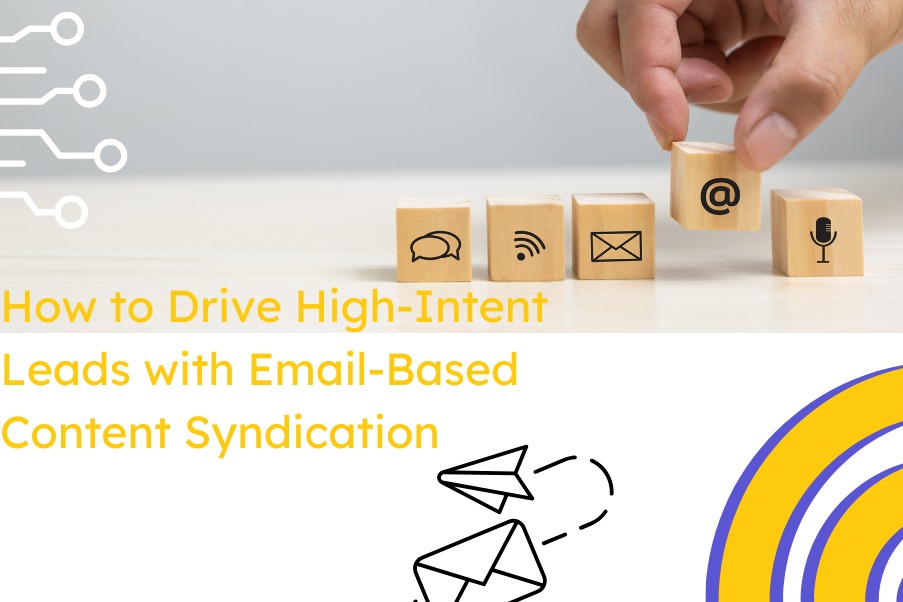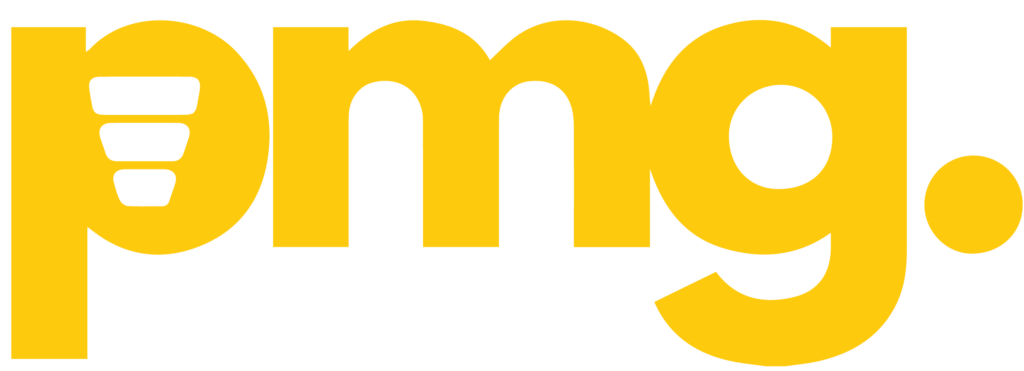Why Integrating Landing Pages with B2B Email Marketing Campaigns Matters for Maximum Impact
Leveraging Email Marketing Campaigns is essential for sustained growth and high-level engagement with key prospects. The true potential of these can only be realized when it is combined with a strategic and targeted approach specifically by integrating email landing pages. This integration is a very powerful method that uplifts conversion rates, streamlines user experience and drives measurable business results. B2B strategists who master these tactics can make a definitive difference in their marketing.
What is an Email Marketing Campaign?
An email marketing campaign can be defined as the systematic way of sending different types of mail to a specific audience segment, through which such campaigns would have clear purposes, which usually culminate in lead nurturing, product promotion, or specialized actions such as conversion or registration. It can be viewed as a central part of a B2B email marketing strategy, aimed particularly at strengthening the relationship and result-oriented action on the part of a very selective list of decision-makers and influencers.
Why is Email Marketing Important for Growth
B2B email marketing remains one of the most effective and inexpensive channels for reaching key stakeholder audiences directly. Whether it is for awareness-building, prospect engagement at the various stages of the sales funnel, or nurturing current customer relationships, email marketing generally allows a decision-maker to be where he or she is most likely to pay attention. The parallel ROI of email marketing, which often outruns other digital avenues, makes it a must in any business development or sales strategy.
What is an Email Landing Page and Why Does It Matter?
An email landing page is just a dedicated web page linked to an email and designed to drive a particular action or even possibly conversion. Unlike all the other types of web pages, landing pages are even more finely tuned than the general offer or message-based concept expressed in the email. Email landing page examples emphasize reducing distractions and offering a straightforward, clear experience, which boosts the chances of conversion, whether it’s through a form submission, download, or registration.
Understanding what an email landing page is, or more importantly, why it matters in the context of a B2B email marketing strategy, is vital because it forms the basis for campaign optimization. Integrating these pages would give the user a seamless yet cohesive step through his trek from email click to conversion, which would enhance engagement and conversion rates.
The Role of Email Landing Pages in B2B Email Marketing Campaigns
The integration of email landing pages into B2B email marketing campaigns serves to optimize the transition from engagement to action. This synergy ensures that you are not only capturing attention but also converting that attention into meaningful business results. Here are several key ways email landing pages enhance your campaigns:
Consistency and Relevance
If the content of your email completely aligns with the messaging on the landing page, you create a more complete and trustworthy experience only for the recipients. This delivers more credibility and increases the chances of them converting as they already see that the landing page fulfills the promise made in the email.
Tracking and Optimization
It is pertinent to note that email marketing campaigns can be tracked through KPIs such as conversion rates, click-through rates, and bounce rates. Landing pages further facilitate the tracking of campaign results and optimization for future email marketing campaigns. Continuous improvements can be made in the efficiency and effectiveness of campaigns by testing which elements (CTA placement, content, design) work best.
Enhanced Conversion Rates
An email landing page dedicated to itself eliminates all intrusions between the click on an email and the actual conversion. By helping such targeted experiences, one can increase the conversion probability, whether it would be getting a demo, downloading a white paper, or selling something.
Best Practices for Integrating Landing Pages in B2B Email Marketing Campaigns
To maximize the efficiency of email marketing campaigns, senior professionals should follow certain basic email marketing campaign best practices for joining landing pages into the email strategy:
Ensure Messaging Consistency
The landing page should have consistent content in the email that matches to create a feel and build trust in the relevance of your message.
Streamline the Call-to-Action (CTA)
Make the call-to-action very visible and also quite appealing. The words of that phrase should be strong enough to induce some behavioral action immediately, either saying, Request a Demo, or Download Now. Your CTA should really pop out and convey urgency or value.
Focus on One Goal
A landing page is meant to drive the visitor to a sole conversion goal. Minimize the distractions through elimination of any unnecessary links or navigations. Keep an eye on the stated action you wish for the visitor to take.
Responsive and Optimized Design
Your email landing page needs to be completely optimized for responsive design as more and more users are now reading their emails on mobile devices. A well-designed, quick-loading page that can be read and understood on a phone can do wonders for conversion rates.
Data-Driven Optimization
Undertake the performance analysis of various variants of the landing page by way of A/B testing, which can expose the most effective of the sets. Examples of items for this could be headlines, pictures, call-to-action buttons, and some form fields.
Types of Email Marketing Campaigns and Their Relevance
Knowing the different types of email marketing campaigns enables a person to optimize the email landing pages, determining when and how to use them. For instance, some email marketing types include:
Newsletter Campaigns
Regular engagement dispatches delivering important content to keep and build up engagement and establish authority.
Promotional Campaigns
Specific offers and deals aimed at the generation of sales or leads, with the requirement usually of a landing page for the offer.
Transactional Campaigns
Mailings that are sent through certain trigger events executed by a customer, like an order update, purchase confirmation, or payment confirmation notice; are often linked to a follow-up ‘landing page’ that offers related deals.
Nurturing Campaigns
Automated, usually drip-email strategies that gradually develop relationships over time, used to very often push prospects down the sales funnel.
Event Invitations
Promotional e-mails for a webinar, conference, or product launching typically lead to a ‘landing page’ for registration.
How to Create Email Marketing Campaigns that Deliver Results
It is indeed important for B2B senior professionals to learn effective email marketing. Some spell out those successful email campaigns as follows:
- Personalize and Segment: Data-driven segmentation enables the sending of personalized content related to specific audience segments. Personalized messaging increases its relevance and engagement.
- Leverage Automation: Automated email marketing campaigns resourcefully save time and enhance efficiency to deliver timely and relevant communication without having to do it manually.
- Optimize for KPIs: Tracking and measuring KPIs for email marketing campaigns-example, open rate, click-through rate, conversion rate, etc. Such data helps you fine-tune your campaigns for maximum effect.
Tracking and Optimizing Your B2B Email Marketing Campaigns
Email marketing campaigns should especially be tracked efficiently to climb up to long-term heights of success. In reviewing the performance measurements regularly, informed decisions would be made on improving strategies. KPIs like click-through rates, conversion rates, and ROI metrics should be analyzed to know how well the campaigns are performing.
Elevating B2B Email Marketing with Landing Pages
As senior decision-makers who lead their organization’s B2B email marketing campaigns, the use of email landing pages as part of your email marketing campaigns is grander than a tactical aspect it articulates a strategic move in maximizing results. Such would increase the conversion rates through improved user experience, keep the users occupied, and develop the business. As B2B marketing continues to unfold, B2B email marketing services and B2B landing pages offer the best bet to keep your campaigns relevant, effective, and result-oriented. Now, it is time to fine-tune that shot, spend on higher volumes of conversion, and have your email marketing campaigns ready to deliver business objectives with maximum impact. Partnering with an email marketing agency or experts in lead generation can amplify these efforts, ensuring your campaigns remain effective and results-driven.
Join hands with PMG B2B pioneers in business lead generation and strategizing email marketing. From designing landing pages to optimizing conversion, we help you take the clicks and campaigns into quantifiable business growth.
FAQ
1. What are email marketing campaigns?
Email marketing campaigns are structured emails, sent to a target audience, to sell a product, service, or message. They are directly influenced in the sense that they attempt to engage your audience, nurture qualified leads, and stimulate a particular action, such as visiting a website, using a service, purchasing an item, or downloading content.
When implementing these campaigns, it’s essential to follow B2B email marketing best practices to achieve the best results. This involves segmenting your audience, personalizing emails to increase relevance, optimizing subject lines to boost open rates, and incorporating strong, actionable calls to action. These strategies not only enhance engagement but also contribute to building trust and delivering measurable business outcomes.
2. How to create email marketing campaigns?
To create a successful email campaign you have to follow these few simple steps:
- Define Goals: Establish what you want to achieve in your email marketing (e.g., lead generation, brand awareness, sales).
- Segmentation: Divide your email list according to: demographics, psychographics, lifecycle stages, and behavior.
- Write Amazing Content: Be specific in writing the header subject, body content engagement, and strong call to action.
- Design Email: Use a cool, mobile-friendly layout visually attractive and with branding elements.
- Choose an Email Marketing Platform: Implement automation and tracking tools such as Hubspot, Mailchimp, or Constant Contact.
- Test and Optimize: Perform A/B tests on subject lines, CTA, and email layouts.
- Send it then monitor: Schedule your email at the best time and keep a note of performance metrics such as the open rates and click-through rates.
3. How to improve email marketing campaigns?
- Personalize Your Emails: Using the name, personalize the email according to the recipient’s preference.
- Mobile optimization: Make all your emails look fabulous on every device.
- Segment Your List: Deliver the related content to specific audience groups.
- Use Strong CTAs: Make sure your calls to action are clear, actionable, and compelling.
- Test and Analyze: Test your subject lines, layouts, and sending times continuously for better results.
- Focus on Value: Deliver the most relevant and valuable content to the audience according to their needs.
4. What is an email campaign?
An email campaign is an interval of targeted emails sent to a set audience for a specific purpose, usually achieved through some marketing consideration. These include promotional constructions, newsletters, product announcements, or other forms of follow-up, designed to create a lead activity or maintain interest and engagement. An email campaign is an interval of targeted emails sent to a set audience for a specific purpose, usually achieved through some marketing consideration. These include promotional constructions, newsletters, product announcements, or other forms of follow-up, designed to create a lead activity or maintain interest and engagement.
5. How long should a marketing email be?
A marketing email by an individual between different events generally observes the following lines:
- Concise and Actionable E-mails: 50-125 sentences for offers and calls to action.
- E-informational: 150-200 sentences for newsletters or notices.
- Storytelling E-mail: Up to a 300-word count if you are going to narrate or establish a relationship with the recipient. Therefore, keep the body short so that the main message and CTA are quickly visible without scrolling down.
6. How often should you send email marketing?
The frequency of sending email marketing campaigns should be tailored to your audience and objectives. In B2B marketing, sending 1-2 emails per week is generally effective for keeping recipients engaged without causing fatigue. It’s important to prioritize quality over quantity and to make adjustments based on metrics like open rates, click-through rates, and feedback from your audience.
Dive into our blog for valuable tips, strategies, and trends on B2B Lead Generation Strategies to fuel your business growth and optimize lead conversion.
